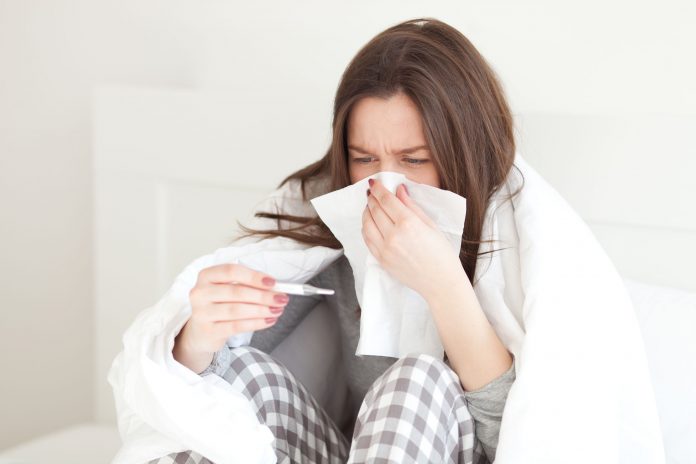United States government officials previously estimated the COVID-19 virus would infect between 70 million and 150 million Americans, causing between 100,000 and 240,000 fatalities. Both estimates made the coronavirus the most devastating pandemic since the Spanish Flu (which some consider the deadliest pandemic ever).
But after re-examining the data, these estimates have been dramatically scaled back.
Epidemiology models using the University of Washington’s Institute for Health Metrics and Evaluation data now estimates total COVID-19 deaths at about 60,000. The models also predict the virus will “peak” sooner. Although a variety of other complicating factors make it difficult to determine how the pandemic will unfold, many agree that previously formed predictions were far too pessimistic.
Many are outraged by the overestimation. Political commentator and TV persona Tucker Carlson called on the American public to “ask the experts how they screwed up the coronavirus models so badly.” President Trump has sent mixed messages on whether he intends to fire Dr. Anthony Fauci, who has played a key advisory role in developing policy responses to the pandemic.
Although the estimated losses of human life are now considerably lower, many political figures haven’t expressed a willingness to rollback or end severe restrictions enacted to combat COVID-19. Between travel restrictions, stay-at-home ordinances, and mandated shutdowns of “non-essential” businesses, governmental policies have severely undercut the U.S. economy.
The data finds a sudden turn for the worst for many Americans. Approximately 6.6 million U.S. citizens submitted claims for unemployment benefits the week of March 21. Estimates for the impact of COVID-19 regulatory measures on GDP range from a 13 percent decrease to a 24 percent decrease for the next quarter. Even after the pandemic ends, the economy might not recover for an extensive period.
There are many other harms that caused economic downturns beyond unemployment and business bankruptcies. Research published in the American Journal of Public Health finds unemployment for older demographics strongly increases their risk of mortality. Another study published in The Lancet found that economic downturns contributed to more than 263,000 preventable cancer-related deaths because access to healthcare is severely restricted during periods of high unemployment, with 40,000 of these deaths occurring in the United States. An article in the British Journal of Psychiatry finds the 2008 financial crisis sparked at least 10,000 suicides across the United States, Canada, and Europe.
One thing is clear: economic downturns are incredibly harmful, and even deadly. But can the United States sufficiently protect against COVID-19 and maintain economic prosperity?
Absolutely. Several countries have successfully maintained a strong economy while flattening the curve.
South Korea once rivaled Italy and China as one of the countries most affected by COVID-19. On March 14, South Korea reported more recoveries than new confirmed cases. And it was able to mitigate the spread of the coronavirus without enacting citywide lockdowns and other heavy-handed restrictions.
Instead, much of South Korea’s success is owed to private enterprises developing adequate testing. Four days before the first confirmed case of coronavirus was reported in South Korea, a biotechnology company named Seegene began its rush to create and produce test kits. As Chief Executive and founder Chun Jong-yoon noted, “Even if nobody is asking us to, we are a molecular diagnosis company. We have to prepare in advance.” Seegene’s test kits were developed in three weeks and helped test over 230,000 patients.
Sweden has also refused to shut down much of its economy, only recommending social distancing and prohibiting gatherings of more than 50 people. After receiving its first confirmed COVID-19 case on January 31, the country had only 11,927 cases and 1,203 deaths as of April 15. As Sweden’s Prime Minister Stefan Löfven remarked, “We have chosen a strategy of trying to flatten the curve and not get too dramatic a process because then the healthcare system probably will not cope.”
Acknowledging this approach is not perfect, the Prime Minister also noted, “we [Sweden] will have more seriously ill people who need intensive care. We will have significantly more deaths. We will count the dead in thousands.”
Although “significantly more deaths” is a concerning admission, it is important to place the Prime Minister’s comments in context. Sweden’s population is slightly less than 9 million, making thousands of deaths a minor fraction. More importantly, countries which have severely restricted their economic activity and the freedoms of their citizens (such as Spain, Italy, and France) have experienced over ten thousand deaths and counting. This the worst of both approaches.
Economist Thomas Sowell has often said that complex problems often do not have solutions, they only have tradeoffs. Pandemics, including COVID-19, are a clear example. Restrictive rules placed on our economy can prevent the virus from spreading but by how much? And at what cost? These factors are often overlooked. This oversight is making an already critical situation worse.
